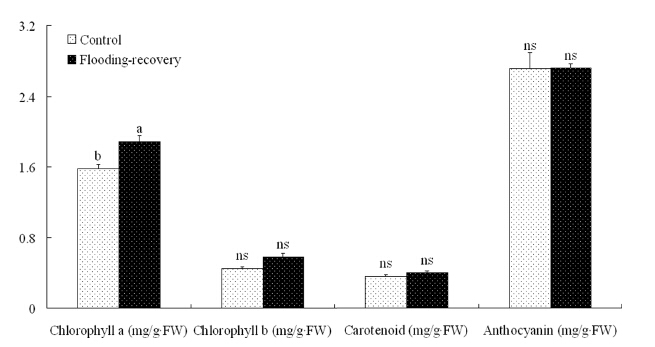Winter-Flood-Tolerant Woody Species Screened for Riparian Protection Forests in the TGR WLFZ
2014-12-19
The hydrological regime, including the flooding time and the prolonged flooding duration in the water-level fluctuation zone(WLFZ) of the Three Gorges Reservoir (TGR) differs from the natural Yangtze River, which dramatically alter the conditions of riparian ecosystems. Few plant species could tolerant such submergence stress, making the TGR WLFZ has become a disturbed ecosystem. Damage to the ecological health and stability of the WLFZ will directly endanger the ecological safety of the whole reservoir area and even the Yangtze River Basin.
Riparian protection forests provide numerous ecosystem services including natural scenery improvement, pollutant filtration, wildlife habitat, thus, it is vital to screen suitable winter-flood-tolerant woody species for riparian protection forests construction in in the TGR WLFZ.
Dr.YANG Fan, Prof. WANG Yong and Prof. CHAN Zhulong from Wuhan Botanical Garden investigated the distribution of woody species in the TGR WLFZ, the results showed that although 39 woody species belonging to 37 genera of 24 families distributed in the TGR WLFZ. Most of them existed as annual seedlings, which were unsuitable for riparian protection forests construction.
The survival rate analyses after controlled winter flooding and investigation of survival rate of woody plant species planted in the TGR WLFZ revealed that arbor species (Salix matsudana, Populus × canadensis, Morus alba, Pterocarya stenoptera, Taxodium ascendens, and Metasequoia glyptostroboides) and shrub species (Salix variegata, Distylium chinensis, Lycium chinense, Myricaria laxiflora, and Rosa multiflora) could endure long winter floods and should be used for riparian protection forests in the TGR WLFZ.
Physiological response of woody plant species during the recovery stage after winter flooding found that P. ×canadensis, M. alba, L. chinense, and S. variegate have developed certain self-repairing capacities during the recovery through the increasing of chlorophyll pigments and photosynthesis in the submerged seedlings to benefit the total biomass accumulation and carbohydrate synthesis.
This research also suggested that these suitable candidate woody species should be reasonably distributed along the elevation of the WLFZ and management should be considered during the construction of the riparian protection forests in the TGR WLFZ.
The study was sponsored by National Natural Science Foundation of China, the Executive Office of the State Council Three Gorges Construction Committee, and Hubei Immigration Bureau. Study entitled “Perspectives on Screening Winter-Flood-Tolerant Woody Species in the Riparian Protection Forests of the Three Gorges Reservoir” was published in PLoS One (2014, 9(9): e108725).

Comparable analyses of pigment contents in S. variegata during the recovery stage after winter floods (Image by YANG Fan)